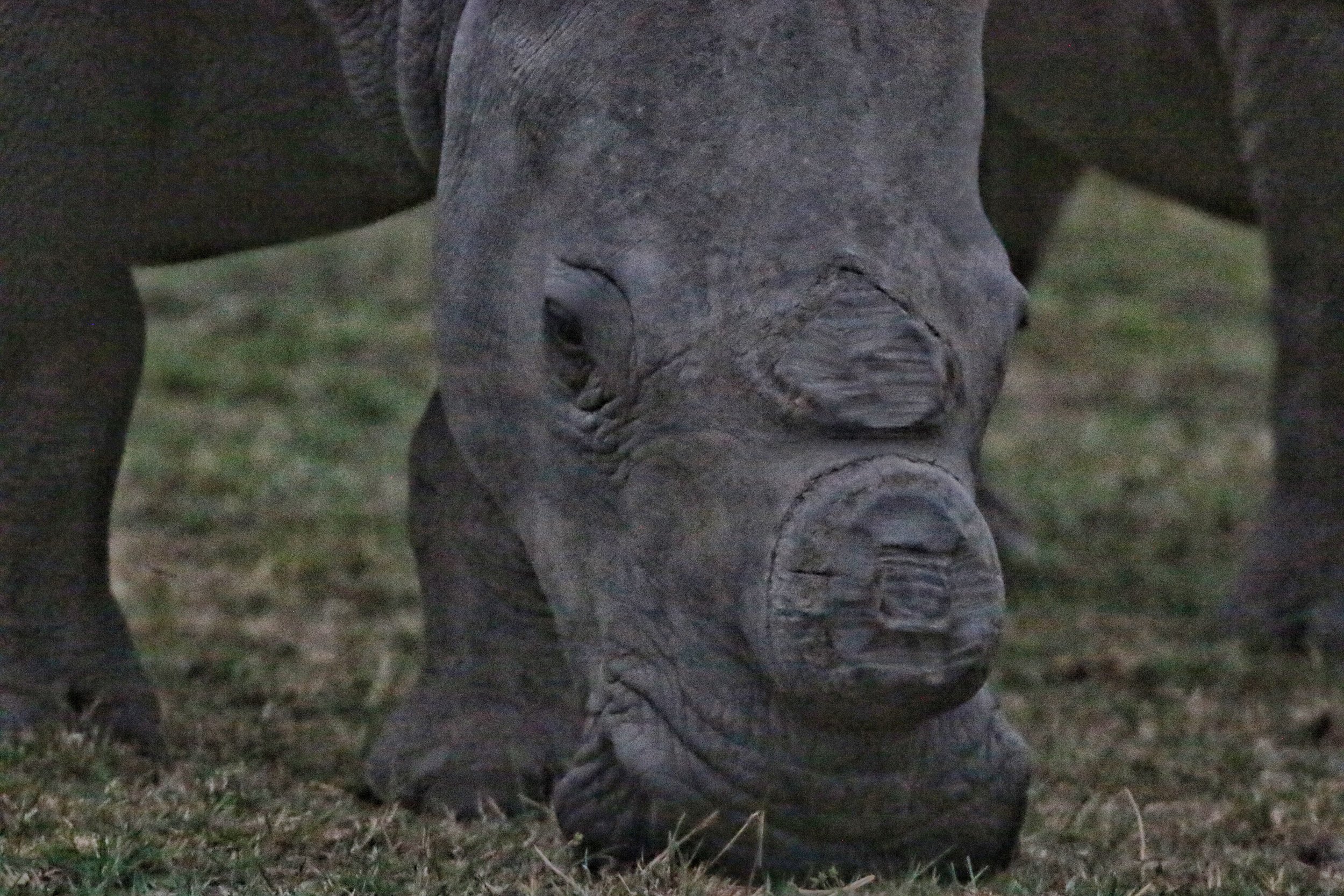for the people who want to know how close we got to the rhinos... pretty darn close
Super cool rhinos, terrible quality to the image
Apologies for the photos in this post - most were taken under very low lighting conditions, which lowers the image quality.
Matobo National Park (formerly known as Rhodes Matopos National Park, and still sometimes called Matopos National Park) in southern Zimbabwe, is the oldest National Park in Zimbabwe. Established in 1926, it is intimately connected with the legacy of Cecil Rhodes, the controversial colonial entrepreneur who built his fortune on the diamond trade. His grave is located within the park.
We were lucky enough to visit with a fascinating guide. Ian Harmer, of African Wanderer Safaris, personally guided our full-day safari. Ian’s knowledge of the region’s history, people, flora and fauna is astonishing, but his passion for conservation, and for rhinos in particular, is what made this trip so memorable.
Rhino horns are made of keratin - the same material as human hair and fingernails. Cutting the horn doesn’t hurt the animal, and the horn will eventually grow back.
The rangers of Matopos have dedicated themselves to protecting their endangered rhino population. When on the job, they camp out in the bush. They are chased by rhinos and other animals. They are shot at by poachers. And for all this, they are paid about $200/month. And despite the fact that the rhinos in the park have been dehorned, poachers are still making attempts on their life because of the value of the horn stump.
While it is sad to see a rhino without its signature horn, at this point I’m just thrilled there are wild rhinos for us to see
We happened to be visiting Africa at a time when issues surrounding wildlife, poaching and hunting were making international news. Donald Trump was allowing hunters to import their big game trophies from abroad. China legalized products made from endangered rhinos and tigers. While the best way to protect these animals is debatable, what is clear is that our current system isn’t working, and we as human beings need to do a better job of protecting them.
Ian was comfortable enough with both our group and the black rhinos in the park to take us out of the 4x4 and get us walking with them. It was incredible to be within a few meters of these prehistoric-looking creatures as they went about their business. While it was in some ways strange and sad to see them dehorned, I would absolutely rather see a rhino without a horn than not see any rhinos at all.
Tragically, even the small amount of horn left on this rhino is enough to tempt poachers
Ian also took us to a very different type of standout attraction in the park: Silozwane cave, containing paintings by the San people, also known as the Bushmen. The San have lived in the area for millennia and there are over 3000 documented sites of their rock art within the park. The paintings in Silozwane cave had accumulated there over thousands of years, layer upon layer of human and animal figures.
beautiful detail on this giraffe
Painting of two lions in profile
If you go: I highly recommend visiting with Ian Harmer if at all possible. He did an absolutely fantastic job, pointing out interesting plants and animals, talking about Zimbabwe past and present, detailing his views on poaching and conservation, and providing a lunch that included the most delicious potato salad I’ve ever tasted (I don’t even like potato salad, and I had 2 servings).












